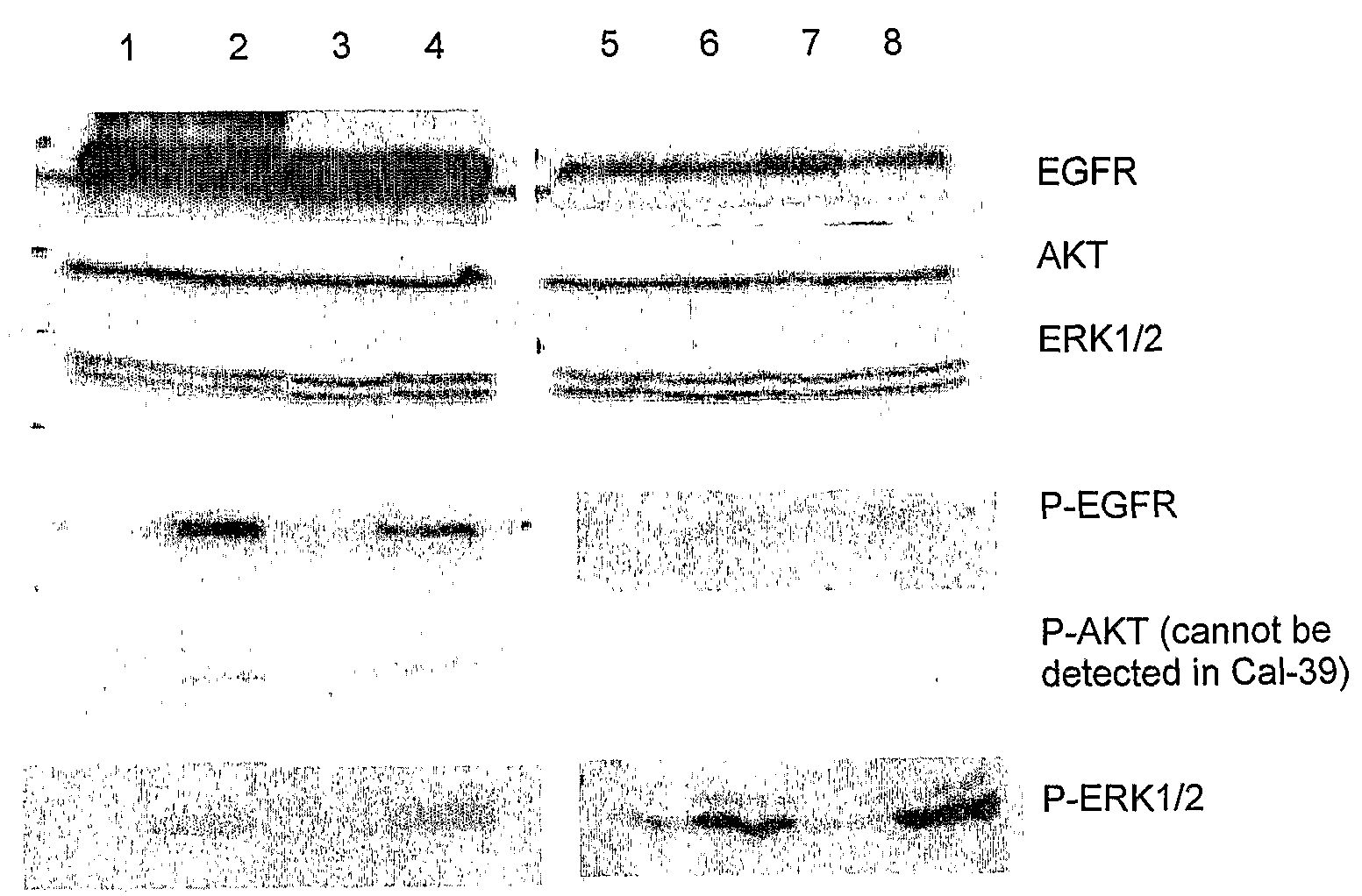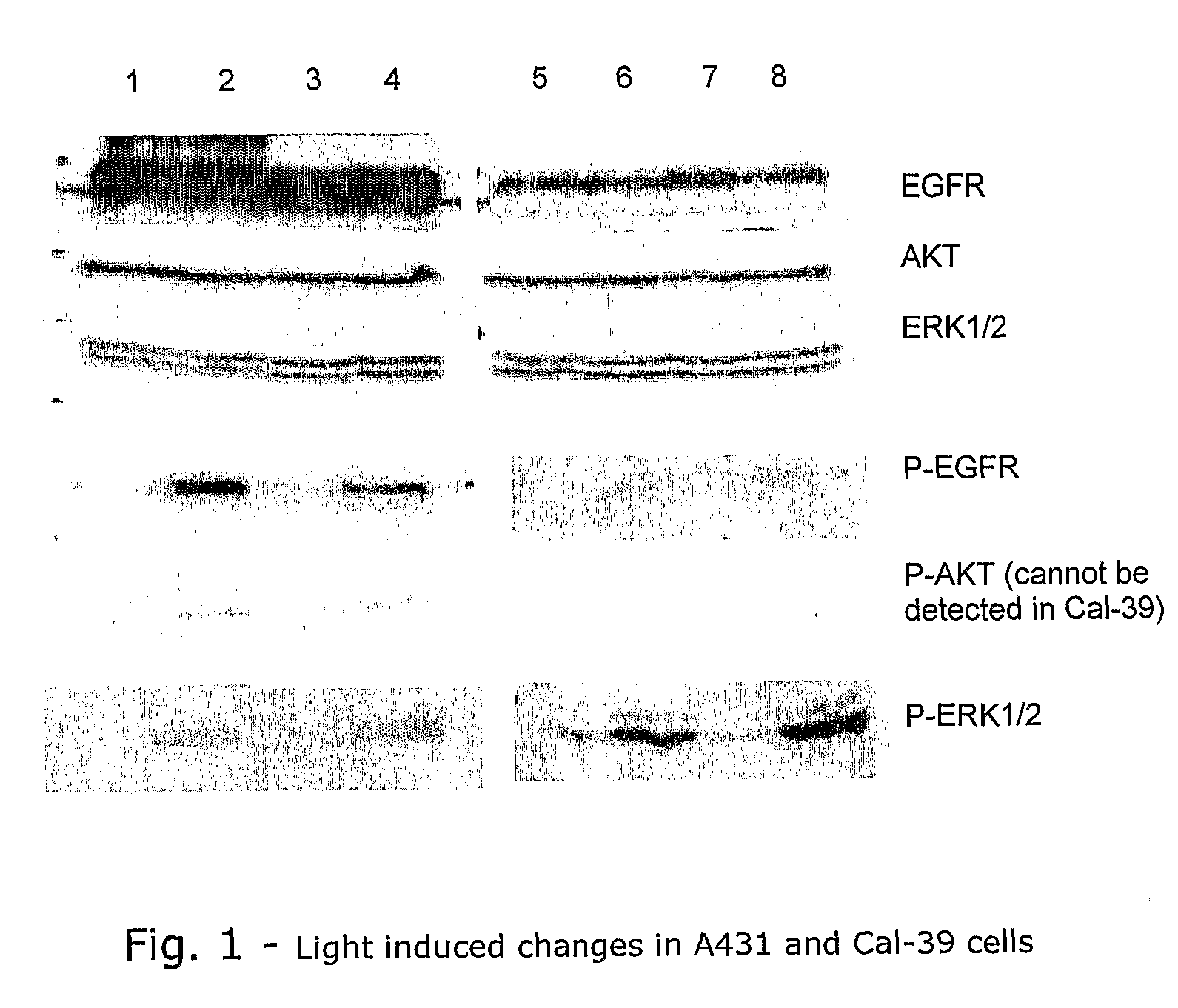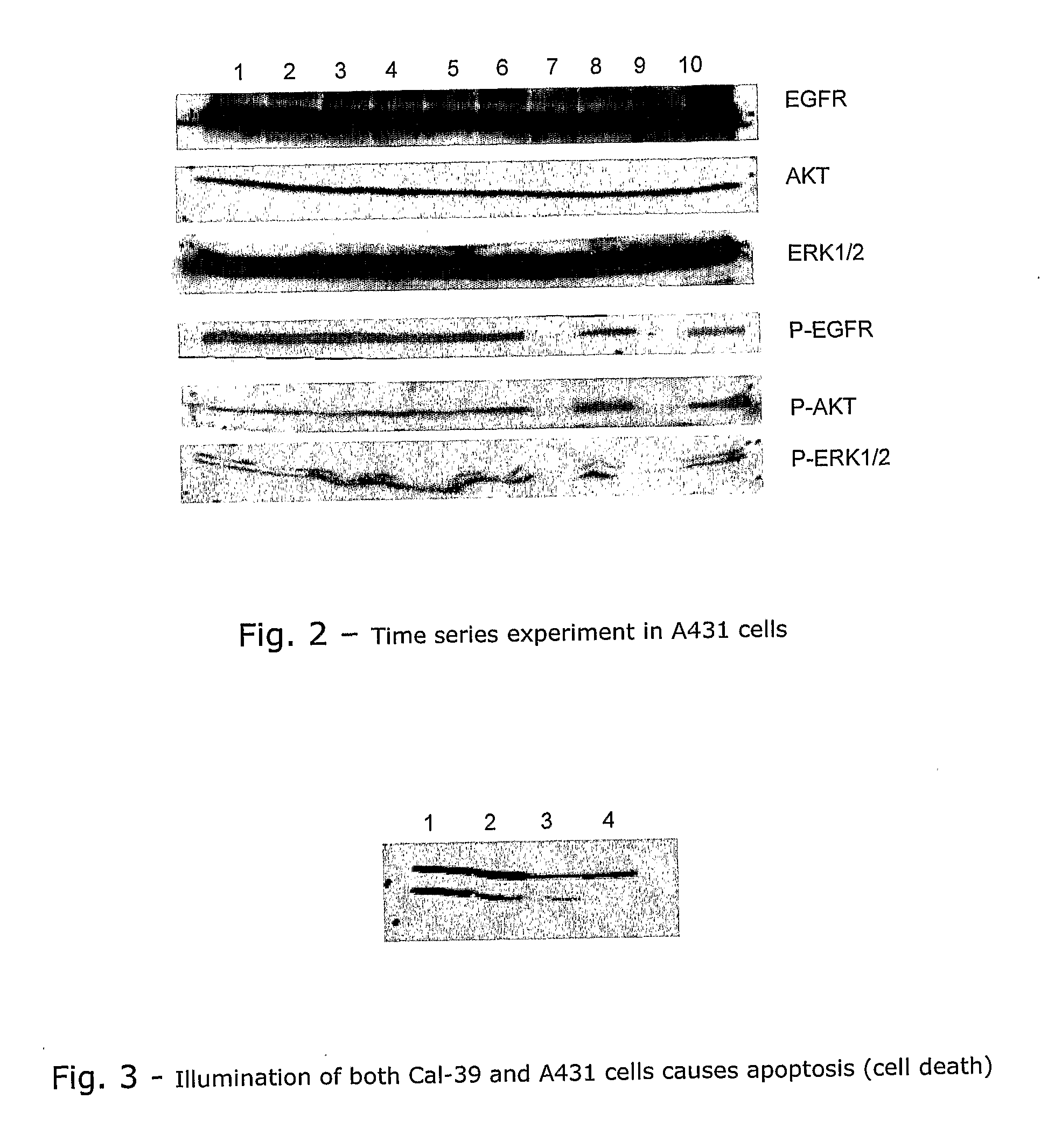Light modulation of cell function
a cell function and light technology, applied in the field of light induced therapy, can solve the problems of apoptotic cell death or necrosis, cellular repair/survival, premature aging of the skin,
- Summary
- Abstract
- Description
- Claims
- Application Information
AI Technical Summary
Benefits of technology
Problems solved by technology
Method used
Image
Examples
examples
[0159]In the following we show that LP-UV treatment of two skin-derived tumor cell lines, i.e. A431 and Cal-39 leads to the inhibition of the EGF receptor and key downstream molecules such as AKT1 and ERK1 / 2 involved in the RTK-catalyzed signaling cascade. These results show a potential for treatment of skin diseases associated with increased proliferation relating to the EGF receptor e.g. warts, condylomas, psoriasis and skin cancer.
Materials and Methods
Abbreviations Used:
[0160]EGF: epidermal growth factor
AKT: Serine threonine kinase. Also known as protein kinase B.
P-AKT (T308): Phosphorylated AKT (threonine 308, an activating phosphorylation)
ERK1 / 2: Extracellular signal-regulated kinases 1 / 2
P-ERK1 / 2: Phosphorylated extracellular signal-regulated kinases 1 / 2 again an activating phosphorylation.
EGFR: Epidermal growth factor receptor. A receptor tyrosine kinase.
P-EGFR: Phosphorylated epidermal growth factor receptor, again the phosphorylation is activating.
Cell Culture
[0161]A431 cell...
experiment 1
Illumination of Two Types of Carcinogenic Cells Demonstrating that UV Illumination Prior to Activation of the EGFR Leads to Inactivation of EGFR and to Changes of Metabolic Pathways (Since Phosphorylated Form of Downstream Proteins are No Longer Seen)
[0171]To see if the observed blockage of EGFR signaling in A431 cells (see below experiment 2) also is found in other cell lines, illumination experiments were performed in another human skin cancer cell line, i.e. Cal-39, which expresses lower levels of the EGF receptor (compare FIGS. 1A and 1B). Western blot detection of phosphorylated EGFR, AKT1 and ERK1 / 2 was used to assess the effect of the UV illumination.
[0172]FIG. 1A shows the results from the human squamous cell line A431. The cells were serum-starved prior to incubation with EGF and illumination. As expected, serum-starved cells (lane 1; control) show no phosphorylation of either EGFR, AKT1 or ERK1 / 2, whereas incubation of cells with EGF lead to activation of the EGFR signalin...
experiment 2
With the Cell Line A431, an Illumination Time Series were Done in Order to Identify the Threshold Time Needed for Positive Results to Occur and to See the Result of Prolonged Illumination
[0187]The human skin cancer cell line, A431, which overexpress the EGF receptor (more than 1.5 million receptors per cell) was used to investigate whether laser-pulsed UV illumination could block EGF receptor signaling. Interestingly, the EGF receptor contains aromatic residues in close proximity to S—S bridges making it a likely candidate for light-induced immobilization.
[0188]To assess the time required to inactivate the EGF receptor with UV light, a time course experiment was performed in A431 cells (FIG. 2). Cells were serum-starved prior to treatment and the cells were either illuminated at different time points and then incubated with EGF or first treated with EGF followed by different UV light illumination times. The blockage in EGF receptor signaling was detected by western blotting using ph...
PUM
| Property | Measurement | Unit |
|---|---|---|
| wavelength interval | aaaaa | aaaaa |
| wavelength | aaaaa | aaaaa |
| wavelength | aaaaa | aaaaa |
Abstract
Description
Claims
Application Information
 Login to View More
Login to View More - R&D
- Intellectual Property
- Life Sciences
- Materials
- Tech Scout
- Unparalleled Data Quality
- Higher Quality Content
- 60% Fewer Hallucinations
Browse by: Latest US Patents, China's latest patents, Technical Efficacy Thesaurus, Application Domain, Technology Topic, Popular Technical Reports.
© 2025 PatSnap. All rights reserved.Legal|Privacy policy|Modern Slavery Act Transparency Statement|Sitemap|About US| Contact US: help@patsnap.com



